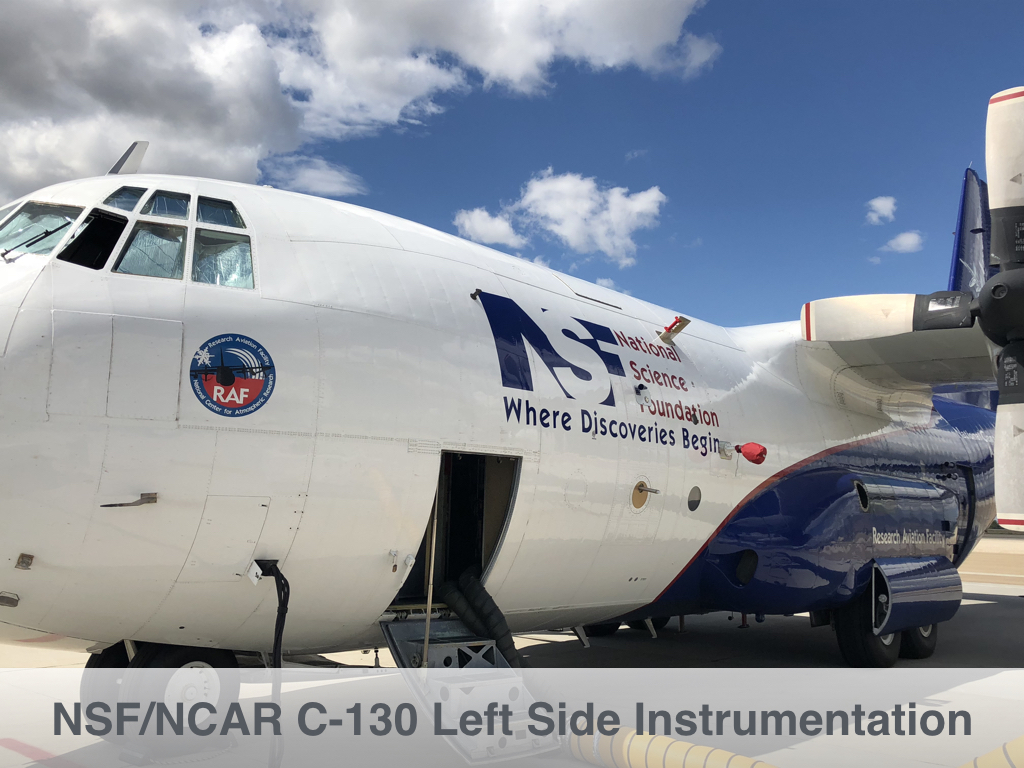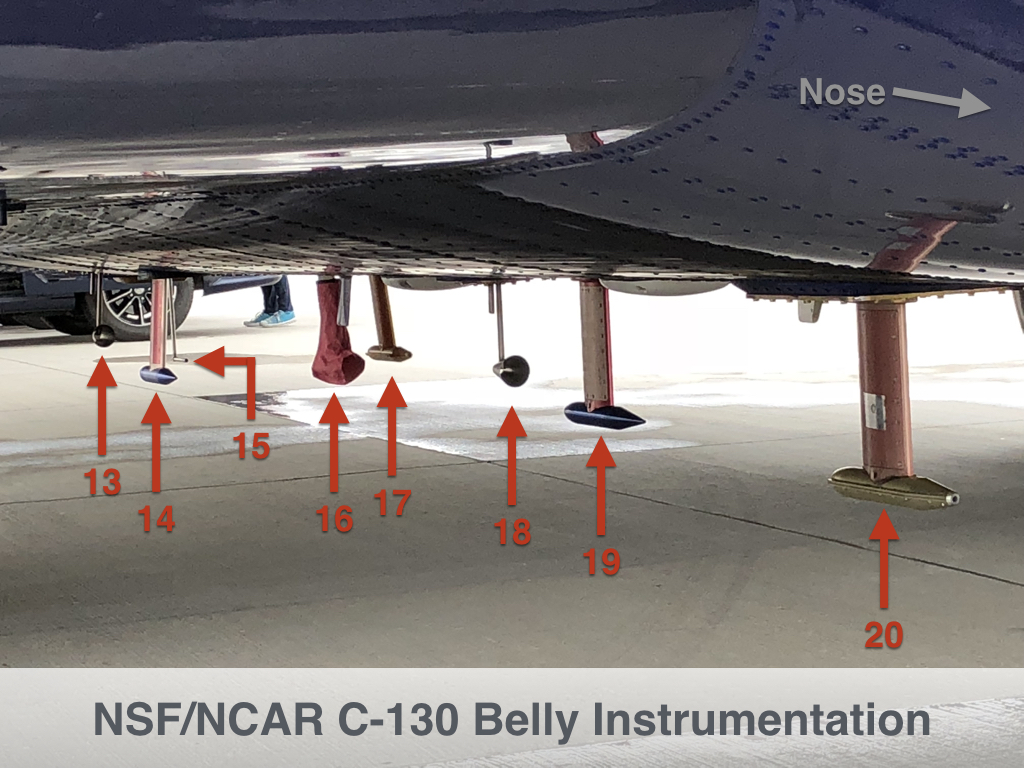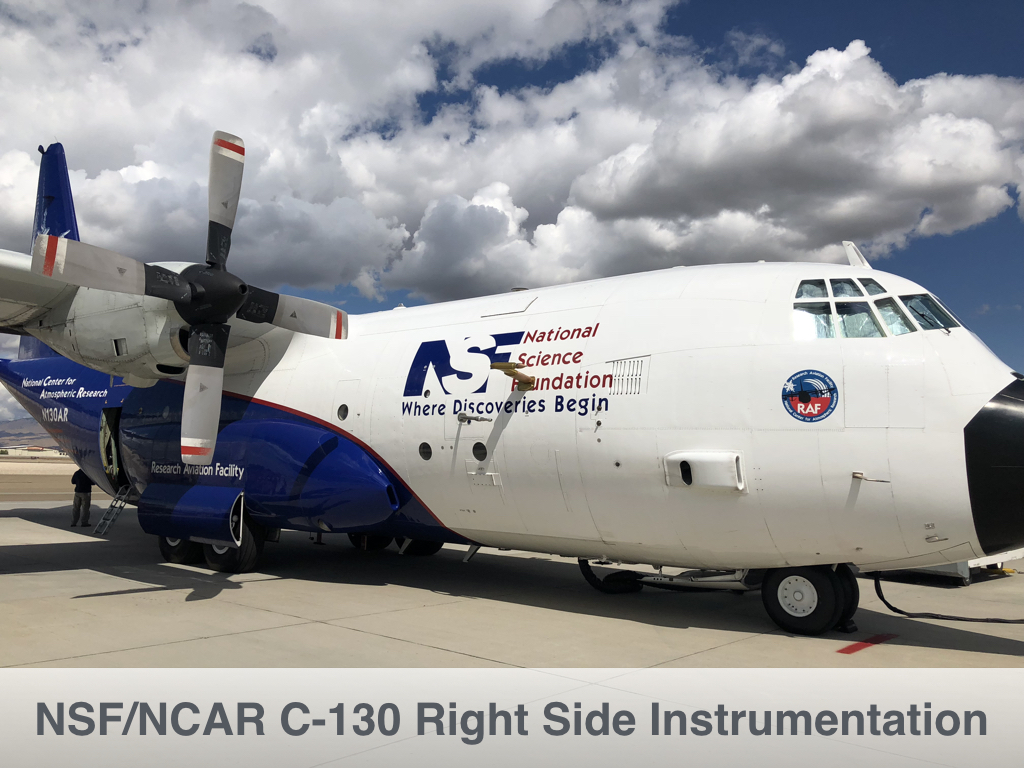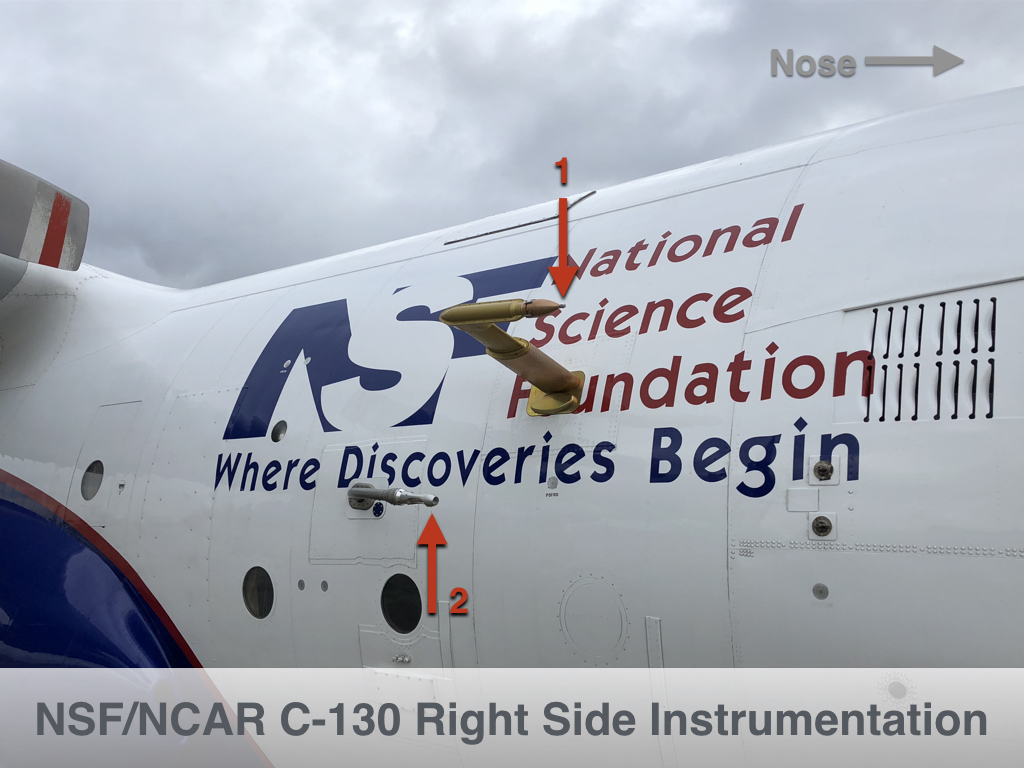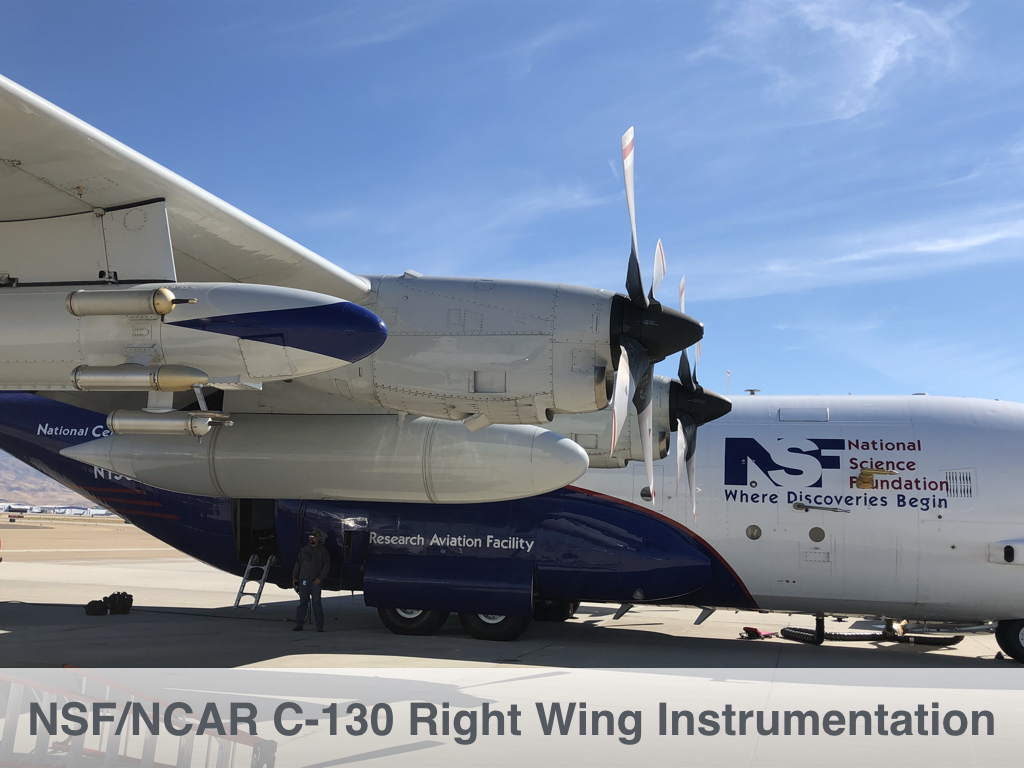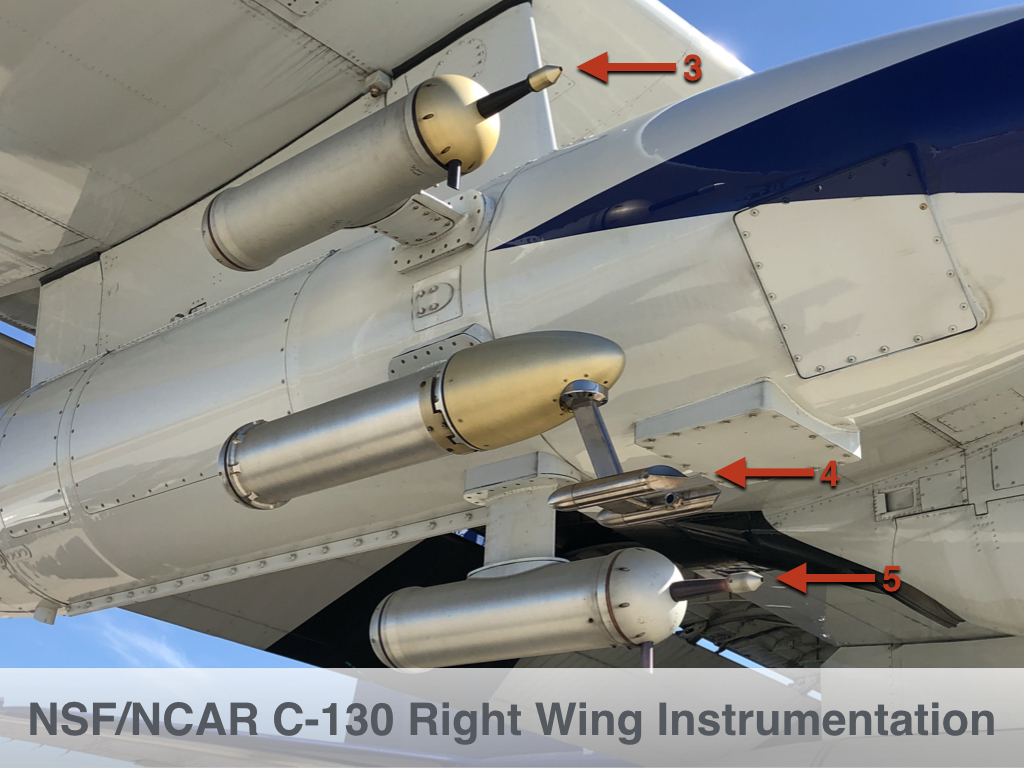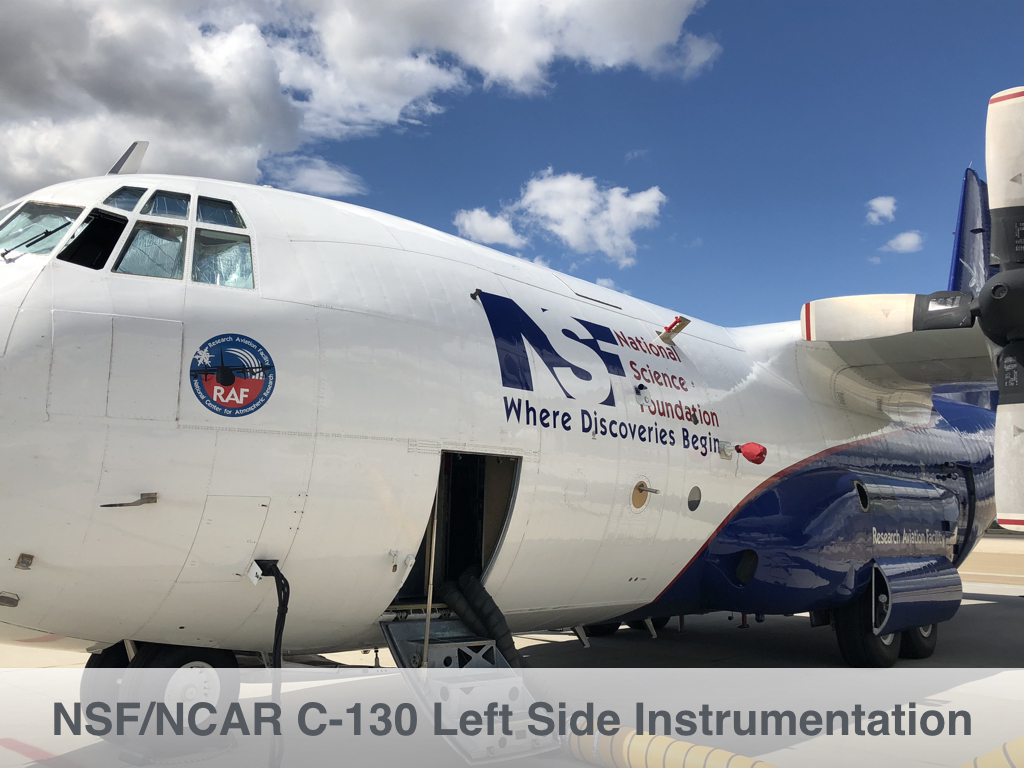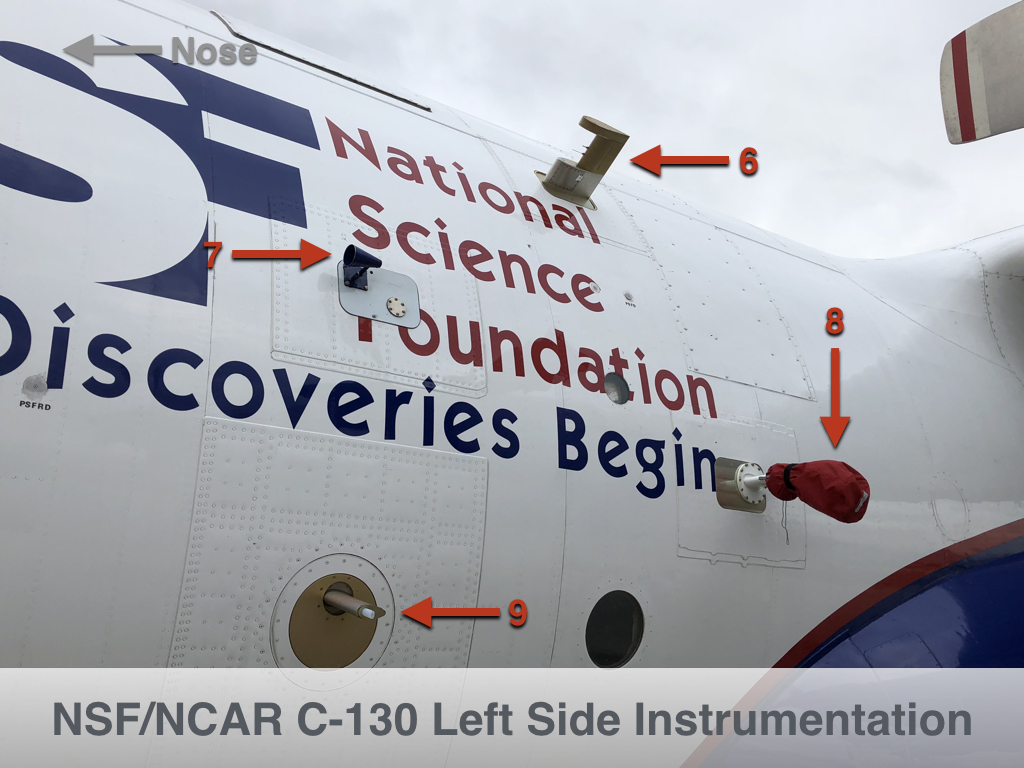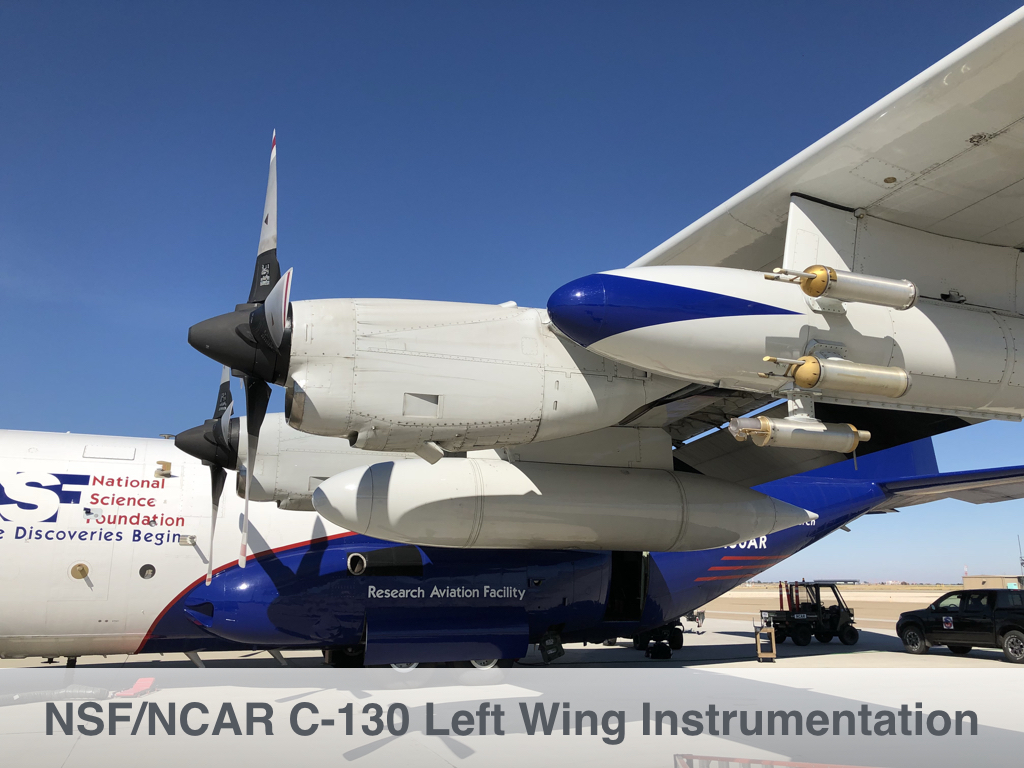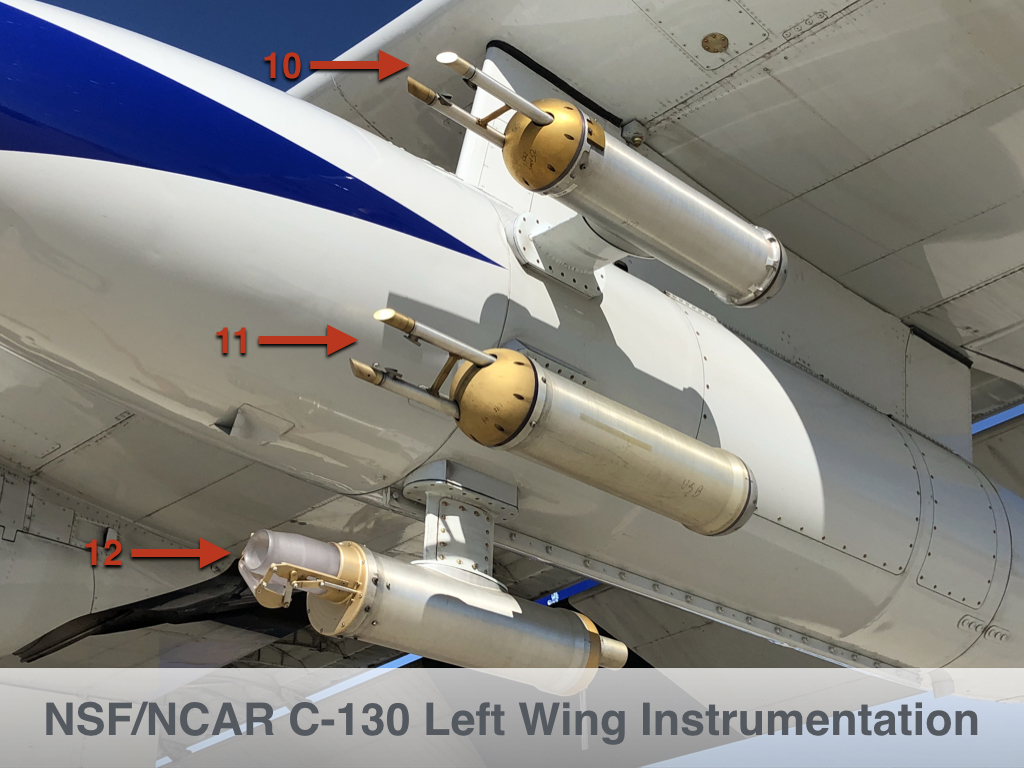WE-CAN is using the NSF/NCAR C-130 research aircraft, essentially a flying laboratory, to conduct research flights over the Western U.S. from 22 July - 31 August 2018. The C-130 formerly served as a cargo plane, so it can carry a large payload of instruments while also having a range of more than 1500 miles and the ability to fly between 1000 – 15,000 feet in altitude. These aspects are essential to fully characterize the atmospheric chemistry of a region because smoke plumes can be far-reaching as winds transport them.
For each field project, a specialized suite of instruments is uploaded to the aircraft to meet the research needs of the study. As part of WE-CAN, the C-130 will carry a suite of state-of-the-art instruments designed to measure a range of aerosols and cloud particles, trace gases, atmospheric radiation, and meteorological parameters such as temperature and winds.
Click images to enlarge.
Right-side Instruments and Inlets
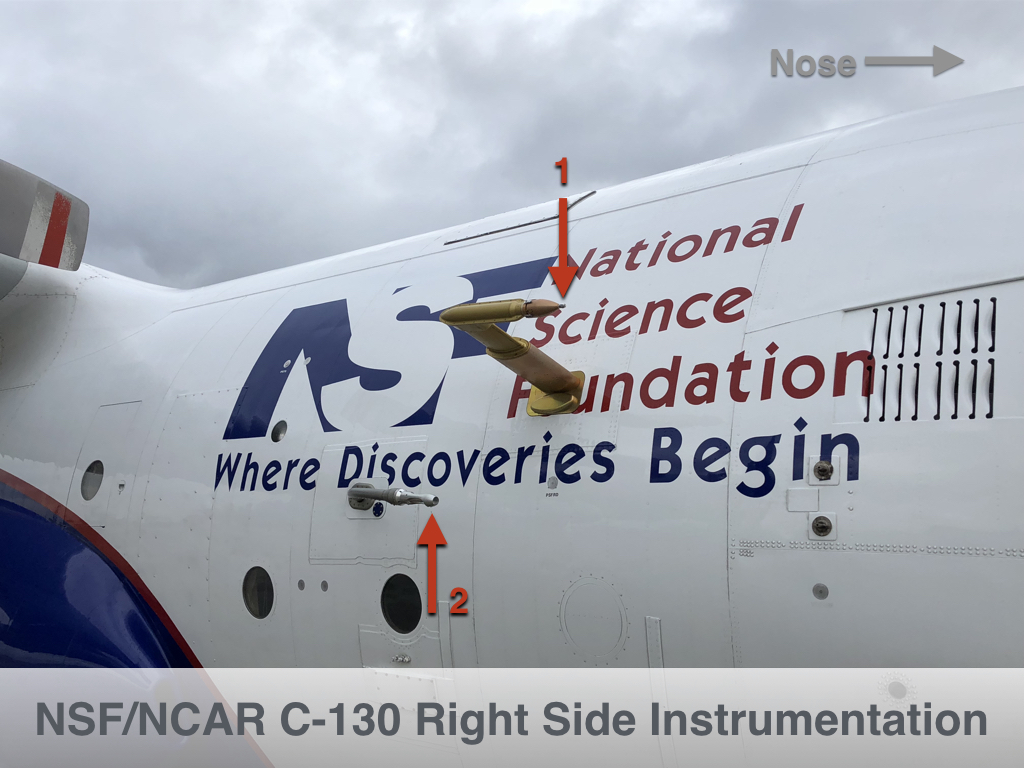 |
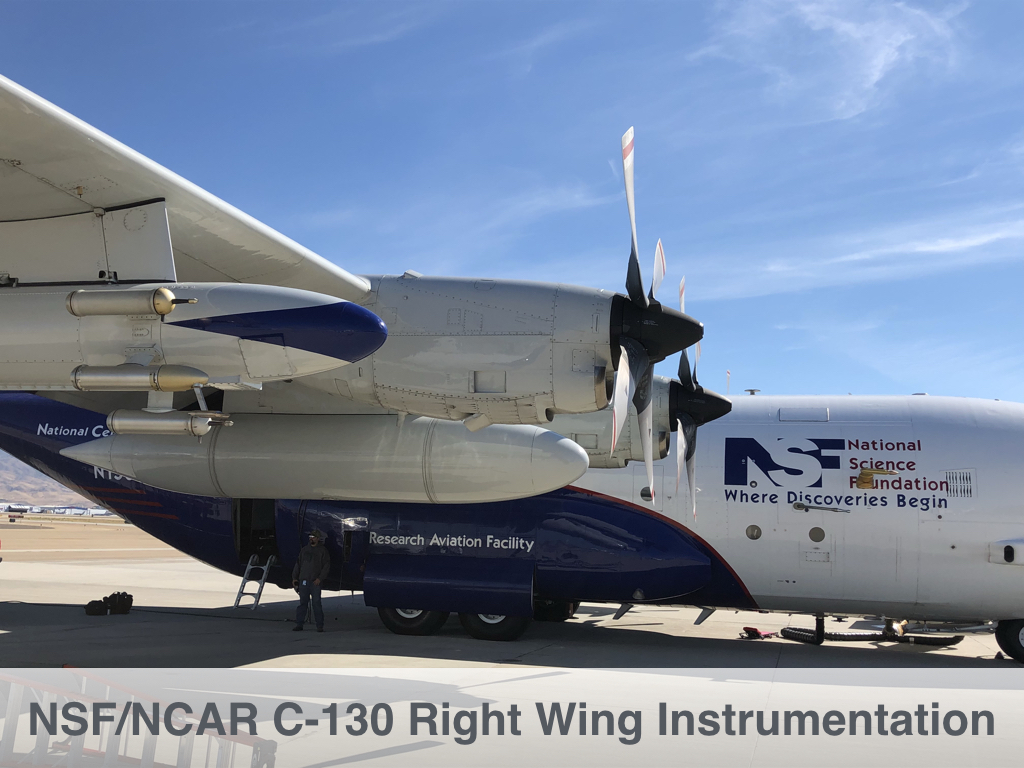 |
 |
Left-side Instruments and Inlets
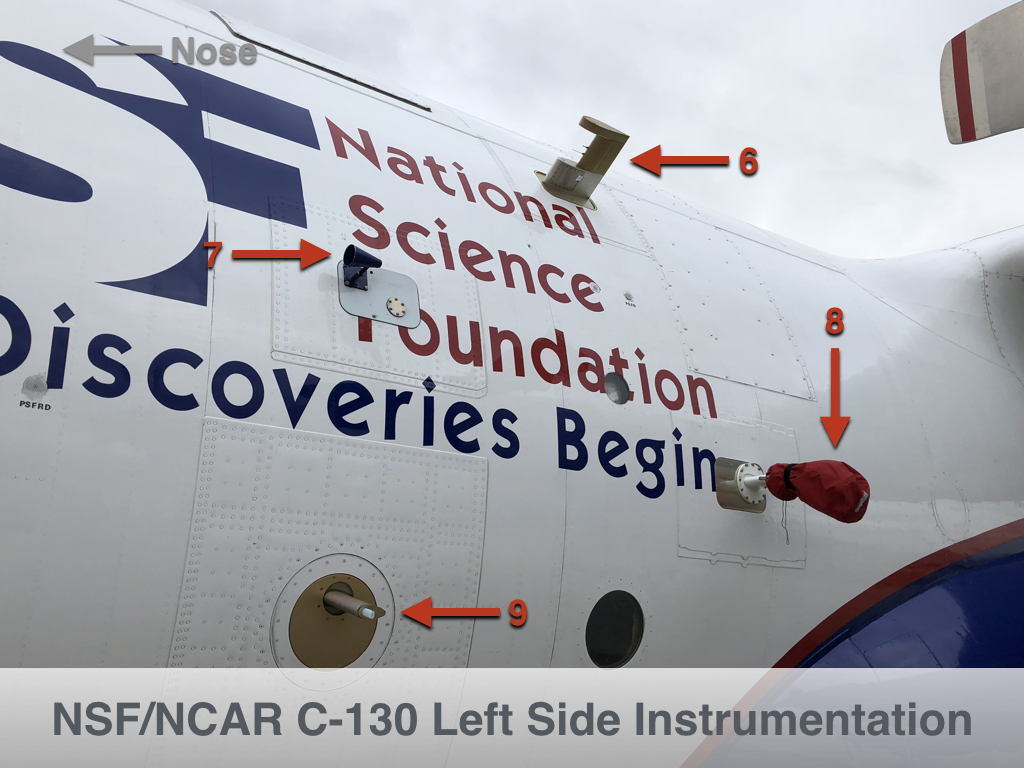 |
 |
 |
|
Belly Instruments and Inlets
|
WE-CAN Data Submission Instructions (Post Field)
Dataset Documentation ("Readme") Guidelines
Quick Questions for WE-CAN PIs


